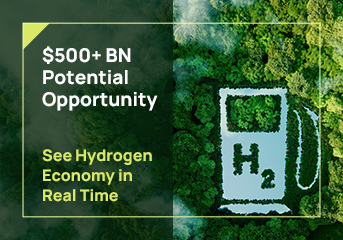Waste to Hydrogen Market - Forecast to 2029
The waste-to-hydrogen market is poised for significant growth, with an expected rise from USD XX million in 2024 to USD XX million by 2029, indicating a XX% compound annual growth rate (CAGR) over five years. Converting waste into hydrogen fuel, known as waste-to-hydrogen technology, addresses waste management and clean energy needs by transforming various waste streams, such as municipal solid waste, biomass, and plastics, into hydrogen gas. This process employs methods like gasification, pyrolysis, or steam reforming, which break down waste at high temperatures to release and purify hydrogen molecules. Waste-to-hydrogen offers dual benefits: it reduces the environmental impact by diverting waste from landfills and produces hydrogen, a versatile fuel for powering vehicles and generating clean electricity. This technology thus plays a crucial role in advancing toward a more sustainable future by simultaneously managing waste and generating clean energy.
The waste-to-hydrogen market uses three technologies: anaerobic digestion breaks down organic waste biologically to produce biogas rich in hydrogen; gasification uses high temperatures and limited oxygen to convert various waste streams into a hydrogen-rich syngas; and pyrolysis utilizes high temperatures in an oxygen-free environment to decompose waste into bio-oil and hydrogen-rich gas.
The waste-to-hydrogen market has been categorized by waste type as Biomass, Industrial waste, Municipal solid waste, and wastewater treatment residues. The biogas segment utilizes organic materials like woodchips, agricultural residues, and dedicated energy crops. Biomass is a readily available and renewable source, making it a promising feedstock for hydrogen production. This Industrial Waste segment includes diverse waste streams generated by industrial processes, such as plastics, paper sludge, and food processing waste. Converting these industrial discards into hydrogen offers a sustainable waste management solution while creating clean energy. The Municipal Solid Waste (MSW) segment processes everyday household waste, including food scraps, paper products, and plastics. MSW is a consistently generated waste stream, making it a reliable source for hydrogen production in urban areas. The Wastewater Treatment Residues segment utilizes the organic matter in sludge generated during wastewater treatment. Diverting this waste stream for hydrogen production reduces landfill burden and creates a valuable clean fuel source.
The waste-to-hydrogen market leverages the derived hydrogen for three primary applications: chemical production, power generation, and transportation. In chemical production, clean-burning hydrogen is an alternative to fossil fuels, reducing greenhouse gas emissions in processes like ammonia and fertilizer production. For power generation, hydrogen fuel power plants equipped with fuel cells generate clean electricity, which is especially beneficial in regions without abundant renewable sources such as solar or wind and serves as a backup during high energy demand. In transportation, hydrogen is a promising fuel for electric vehicles, offering extended driving ranges and faster refueling times compared to battery-powered options, thus promoting cleaner transportation, and decreasing reliance on fossil fuels.
The hydrogen market is experiencing significant growth and transformation across various regions worldwide. In North America, the United States and Canada saw a remarkable surge in 2023, driven by pivotal policy changes, technological advancements, and major project milestones. The US Inflation Reduction Act (IRA) is a critical factor, which offers substantial tax credits, such as up to USD 3 per kilogram, for clean hydrogen production based on carbon intensity, thereby catalyzing the clean hydrogen sector. In Europe, the European Union's strategy on hydrogen, adopted in 2020, outlines policy actions in investment support, production and demand enhancement, market creation, infrastructure development, and international cooperation. This strategy underscores hydrogen's integral role in the EU's broader energy system integration plans. Meanwhile, the Asia-Pacific region is advancing towards a hydrogen-centric economy, with countries like Australia, India, Japan, China, and others developing comprehensive national hydrogen strategies. The Middle East and Africa (MEA) region rapidly positions itself in the worldwide hydrogen market through large-scale low-carbon hydrogen projects. African countries such as South Africa, Egypt, and Morocco are leveraging their abundant renewable resources to produce green hydrogen for domestic use and export to high-demand markets like Europe. In Latin America, potential green hydrogen development hinges on collaborative efforts to mitigate uncertainties, develop multilateral partnerships, and standardize regulatory solutions across the region.

















Growth opportunities and latent adjacency in Waste to Hydrogen Market